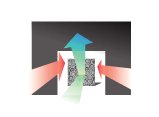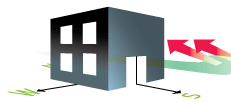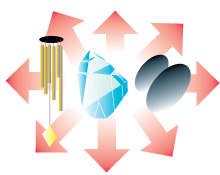East Meets West Side
WHEN THE Oregon College of Oriental Medicine decided to move from its cramped and aging Southeast Portland headquarters to an import warehouse in Chinatown formerly run by Bill Naito, they called on Peruvian feng shui master Alex Stark. Internationally renowned for translating his deep knowledge of ancient Oriental philosophy into modern commercial office environments, the Venice, California–based “geomancer” transformed the faded four-story structure into a cross between an urban renewalist’s fantasy and a meditative sanctuary. As the college reopens this month, Stark explains the process:

Image: Michael Novak
Structure
Chi is the fundamental source of energy, vitality, and longevity, but it comes in two forms: positive (shen chi) and negative (sha chi). Stark designed wide, open doorways leading into spacious foyers where shen chi can gather. A door serves as a buffer to sha chi before visitors proceed from the entry into the community room.

Image: Michael Novak
Placement
Aerial photos helped Stark assess the site and determine the chi of the surrounding city. Portland’s abundant bridges and high-traffic areas represent trauma to the natural environment and generate sha chi. Stark placed the main entrance to the south, facing NW Couch Street and away from the MAX line on NW First Avenue. The upper floors benefit from the “abundant cosmic chi” of the nearby Willamette.

Image: Michael Novak
Timing
The date of a building’s construction (its “birth”) generates a horoscope. Though originally constructed in 1911, the extensive remodel allowed Stark to give the building a new birthdate of Tuesday, June 28, 2011, a date that indicated great potential for academic achievement, strong student-faculty relationships, community participation, and intelligent leadership.

Image: Michael Novak
Design
Stark strategically placed certain objects around the building. Chimes correct chi imbalances and help prevent conflict. Quartz crystals help neutralize any energetic residue left by previous tenants and generate harmony and calm. Finally, parabolic mirrors deflect views of blank walls and bridges, structures associated with obstruction and trauma, respectively.



